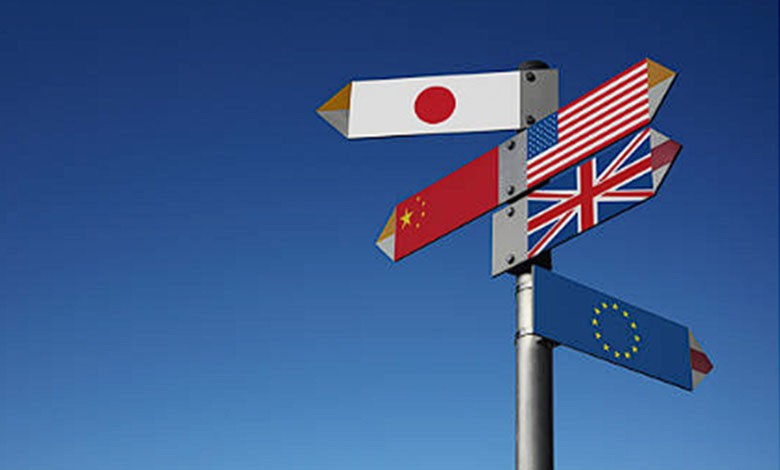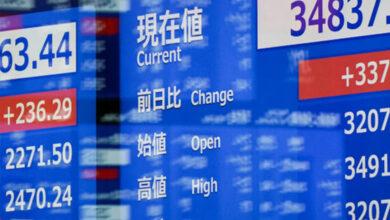Trade Wars: A Look Through the Century – What Has Changed (continued)

We covered a few last time examples from the economic history of the 20th century, which illustrate that protectionism in an individual country often provokes economic difficulties and forces even partners to take measures to protect their own industry. Although protectionist policies may seem like an effective way to maintain the domestic market, they often lead to trade barriers, higher prices, and lower profits for businesses.
Why modern trade wars are more powerful than past ones
Today’s trade confrontations are tougher and more complex than a century ago. Then countries raised tariffs and quotas on imports, and now use methods that affect global supply chains, new technologies, currency markets and other aspects of the global economy. These conflicts become aggressive mainly because of changing attitudes, economic isolation and the rise of nationalism.
Today, countries actively use sanctions and restrictions on important sectors – technology, energy and finance. In particular, the US has restricted China’s access to advanced semiconductor technologies to curb its technological development. Non-tariff barriers such as environmental standards and safety requirements also make it difficult for competing countries to enter foreign markets and create barriers to international trade.
In order to reduce dependence on imports, countries introduce economic isolation. Such programs as the American “Buy American” stimulate domestic production of important goods and technologies, reducing dependence on foreign suppliers. Governments also support their companies with subsidies and investments in research and development, which creates an uneven playing field for international competition.
Economic nationalism is stronger especially during such crises as the covid pandemic. Countries try to conserve resources for the domestic market and protect their manufacturing sectors from foreign competition. This leads to restrictions on exports and an increase in the role of domestic production, even if it requires significant costs.
Trade wars also involve currency manipulation. When a national currency depreciates, exports become cheaper in the world market, giving a country an advantage, as China does. In response, other countries may introduce additional tariffs, which increases economic tension.
Trade aggression disrupts established supply chains, which increases costs for companies and forces them to change their production and logistics systems. Disputes between the US and China are forcing manufacturers to shift production to other regions, creating instability and raising prices. Also, trade wars increasingly involve high-tech sectors, where countries compete for leadership — in the field of artificial intelligence, green technologies and semiconductors. Sanctions and restrictions on the supply of modern technologies slow down the development of innovations and limit their availability on the world market.
Hence, today’s trade wars involve not only traditional goods, but also technology, supply chains and innovation, making them more aggressive and complex than before.
Economic approaches of “Tariff Man”
During his last term, Donald Trump earned the unofficial nickname “Tariff Man” precisely because of his aggressive trade policy. This nickname came about when he actively introduced tariffs on imported goods, primarily Chinese, to reduce the US trade deficit and stimulate the development of domestic production.
Trump himself used the moniker in a tweet in 2018, declaring: “I am a Tariff Man,” underscoring his tough approach to trade negotiations. His tariff policy caused a stir both in the States and on the world stage.
The modern trade war between Beijing and Washington
In the middle of Trump’s last term, a major trade confrontation between the US and China began. With the blessing of its helmsman, the US imposed high tariffs on steel, aluminum and other “Made in China” products to protect national security and reduce the trade deficit with China.
Beijing was quick to respond, imposing its own tariffs on American goods: agricultural products, cars and electronics. This has reduced the incomes of American farmers and manufacturers and disrupted global supply chains.
High-tech sectors, where components are often made in China and assembly takes place in other countries, including the US, have been particularly hard hit. Tariffs have increased the cost of components, forcing companies to raise prices or relocate production. Financial markets also reacted with volatility, and prices for home appliances and electronics rose.
The imposition of tariffs had temporary support for some industries, but overall led to higher costs, lower profits and job losses, which had a negative impact on the global economy.
Trump’s return to power is accompanied by a mandate to implement large-scale trade taxes. If the Smoot-Hawley Act of 1930, discussed earlier, raised import tariffs by an average of 6%, enough to cut world trade by ⅔, Trump, on the other hand, offered much more radical numbers during his campaign, voicing 60% rate on Chinese goods and up to 500% on Mexican cars.
Customs tariffs for other countries, including Europe, can be from 10 to 20%. This reflects the significant changes in economic policy that may occur under a Trump presidency. His strategy is to first put pressure on other countries with tariffs and then negotiate favorable terms.
Trump is seeking to overhaul US trade policy because some Republicans believe opening American markets to global competition was a mistake. The United States, with its policy of openness to free trade, cooperation with China, and outsourcing of production, has made China the number one factory in the world, producing more than a third of all manufactured goods in the world, more than the United States and Germany combined.
What is balanced trade under Trump
Trump wants balanced trade, but the main emphasis is on the recovery of key industries in the United States. The goal is not only to balance trade flows, but also to bring manufacturing back to America, strengthen its manufacturing advantage, and build up manufacturing capabilities weakened by China’s rise as the world’s factory, especially in microchip production.
During the new term of “Tariff Man”, restrictions on trade with China will remain. It is likely that the import of consumer goods and raw materials will remain permitted, but quotas may be established, which will provide additional revenues to the budget. However, the feasibility and reality of tax cuts for American businesses remain controversial. Proponents of tough trade policies say the tariffs did not boost inflation during Trump’s first term because Chinese exporters were forced to lower prices. However, the new tariffs could lead to higher prices for Chinese goods, changes in trade flows and a boost to US job growth.
The sacred meaning of Section 301 of the US Trade Act for Trump
Trump has actively used Section 301 of the US Trade Act of 1974 in his economic policy. This statutory provision gives the US Trade Representative the authority to investigate and respond to actions of other countries that violate trade agreements or restrict American business. It allows the US to impose tariffs, quotas or other restrictions on goods from countries that use unfair policies.
The section became the basis for US action against China in 2018, when the Trump administration imposed tariffs on Chinese goods, accusing Beijing of unfair trade practices, including forced technology transfers and intellectual theft.
Trump may raise tariffs on strategic goods and technology from China under Section 301 to protect American technology. It may also launch new investigations into China’s violations. These tariffs could be included in the 2025 tax bill to offset domestic tax cuts. At the global level, Trump could instruct his trade representative to review all US trade deficits, which could lead to new protectionist policies.
At one time, the Biden administration suspended Trump-era tariffs on European steel and aluminum and lifted tariffs on Airbus as part of the green transition. Trump plans to reinstate these tariffs. In this case, the EU will face a difficult choice, given its trade battles with China, which is already responding with tariffs on European goods. It is important for Europe to show that the subsidized model of China’s economy is unsustainable. Without seeking to break ties with China, Europe wants to balance trade with it.
Will China respond symmetrically to the trade actions of Europe and the US, or will it choose a different strategy? Beijing is currently trying to reduce its dependence on Western markets. It trades more with developing countries and creates new financial channels to avoid sanctions. China is also investing in its technologies – microchips, artificial intelligence and quantum computing. And in order to be closer to such a desirable sales market, Plydnebesna practices nishoring, investing in production in Mexico to take advantage of the proximity to the American market and the terms of the USMCA agreement, which allows duty-free trade of many products in North America.
Tetyana Viktorova





